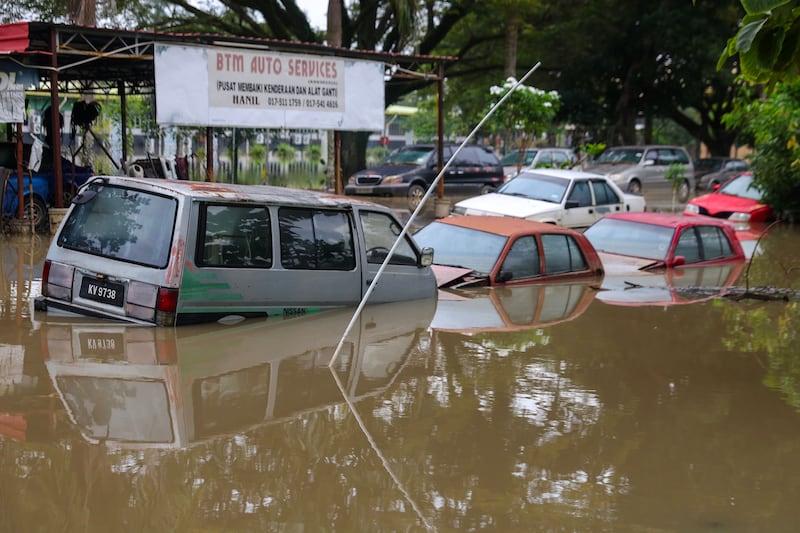The health system is “unprepared” for “serious and worsening” impacts of homelessness on children, a leading paediatrician has warned.
Dr Aoibheann Walsh, consultant specialising in paediatric social inclusion at Temple Street children’s hospital in Dublin, says more children are spending longer in homelessness, exposed to “more and more” health issues.
She is seeing malnutrition effects one would expect in developing countries, such as rickets, anaemia, faltering growth and extreme tooth-decay, and skin “infestations” such as scabies. Children with autism or intellectual disability face traumas deepened by overcrowded, noisy emergency accommodation with parents unable to cook the foods they prefer, she says.
“They may be nonverbal, faecal smearing in hotel rooms, bed-wetting, refusing to eat, not sleeping. These are really distressing, often sensory-seeking behaviours, heightened by being in homeless accommodation.”
READ MORE
Walsh leads the Lynn Clinic, the only established paediatric inclusion health service in the State. It is based in the HSE primary care centre in Summerhill, and focuses primarily on children in emergency and direct provision accommodation.
Latest data show in May there were 4,316 children in emergency accommodation – the most since records began in July 2014 when there were 749. Of these, 3,233 children were homeless in Dublin compared with 585 in July 2014.
The Dublin Region Homeless Executive confirms more families are spending longer homeless. Of the 1,464 families in emergency accommodation in May, some 347 (26 per cent) had been homeless 24 months or longer. “When compared to May 2023, the percentage of families in the 18-24 months and 24-plus months categories has increased,” it says.
The Lynn Clinic, which opened since 2020, is experiencing a “spiralling” caseload but it remains “temporarily funded” by the HSE.
It saw more than 300 children last year, of whom 127 were new referrals. Of these 90 per cent were aged under 13 years, with the largest proportion aged five or younger.
They included a boy (5) who had refused to eat anything but milk and biscuits since his family became homeless two years ago; a boy (4) with autism who was “in crisis”, had become “completely emotionally dysregulated” and required nine tooth extractions. An older boy had serious behavioural issues. During consultation alone with his mother it emerged she had suffered “horrendous abuse”, which her son had witnessed and “was the crux of the matter”.
In 27.6 per cent of new referrals, the child had developmental delay; growth/nutrition issues in 16 per cent of cases, and, gastrointestinal issues – predominantly vomiting and/or constipation starting after becoming homeless – in 9.5 per cent of referrals.
We had one family with four kids including a newborn in one double bed recently. This was their homeless accommodation
— Clinical nurse manager Birgitta Joyce
Whatever the referral, the children are given a general health and dental check. A total of 31 per cent were found to be anaemic compared with 10 per cent of children generally; 37 per cent were vitamin D deficient compared with 25 per cent generally; one in 10 were in above 98th percentile body weight for their age and height (severely obese), and 4 per cent were under the second percentile (severely underweight).
Children may be referred to the Lynn Clinic by Temple Street emergency department, other health or social services or frontline services such as Focus Ireland.
Clinical nurse manager Birgitta Joyce says: “We give each patient an hour in each consultation, far longer than they’d have in a normal GP or hospital consultation. We will ask about their accommodation. We had one family with four kids including a newborn in one double bed recently. This was their homeless accommodation. We can advocate for them for a bigger space.
“We will ask: Do you feel safe in your relationship?,” says Joyce. “You may get a disclosure of domestic or sexual violence. There was a mother in the last few weeks who had been trafficked within her own country for sexual reasons. She had to leave very suddenly with her child. Her daughter had been present for all of this, for months and months and months.
“Every week we have at least one horrendous disclosure of torture, extreme sexual assault, really pervasive domestic violence. Their capacity to parent, to follow up with medical appointments for their child, even a simple thing like an X-ray or bloods – it takes a lot of support because there can be a lot of PTSD.”
[ When the diagnosis is homelessness, what is the cure?Opens in new window ]
Many parents, struggling with poor mental health, literacy, poverty, housing and little English, face “huge barriers” navigating the health service for their children.
Among simple measures the team have taken are holding clinics in the afternoon when children finish school rather than in the morning as is usual in hospitals; contacting parents with reminders by WhatsApp so they don’t need phone credit to reply, and rather than by a letter as many families move frequently, and, producing leaflets in multiple languages, and, in easy-to-read and picture-format for those with literacy problems.
The waiting list for this “wraparound” service, with its links into other organisations such as play-therapies and domestic violence supports, has grown to 11 months. Dr Walsh fears she may have to restrict her catchment area as demand grows.
Her team is seeing “the tip of the iceberg”, and she fears “society is numb” to child homelessness as it reaches record levels. “We haven’t begun to see the societal impact of the multiple traumas of homelessness, and the health service is unprepared for it”. It is “crucial”, she says, that not only is the Lynn clinic funded securely for the long term but also that more open across the State.
A spokeswoman for the HSE said the executive was “developing a range of inclusion health services across all hospitals to support access for homeless, migrant and other marginalised groups.
“The HSE is committed to the continued funding of the Lynn Clinic, in line with funding provided by the Department of Health for homeless and migrant health services.”
‘His iron is low. He hasn’t grown. His weight is not increasing. It is very bad’
Aamiina’s youngest child (5), who has autism and ADHD, has not eaten anything except milk and biscuits since the family of five became homeless two years ago.
“His iron is low. He hasn’t grown. His weight is not increasing. It is very bad and is because of the accommodation ... He is severely constipated. He wants to poo and he is crying all the time,” says Aamiina*.
They live in one room in a B&B housing 300 homeless people, including more than 150 children. Her son does not like noise and “does not know how to deal with sensory issues”. He gets frustrated, bangs his head on walls and bites people. “My body is covered in bite marks,” she says.
Her husband, a security guard, does not get home until after 8pm. Aamiina cannot start cooking in the shared kitchen until then because she it is not permitted to leave children alone in the bedroom and if she brings her son to the kitchen, he will “run away”.
“They told me, the doctors, he needs a house where he can have consistency, where I can put food out for him and he can choose. In the room we are five people. We eat on the floor. We don’t have a table. It is full of lots of stuff and no space; no peace for him. It is not a place where children should live, especially special needs.”
The family is entitled to HAP of €1,950 but cannot find anywhere to rent, she says. “I look on Daft.ie daily. Landlords do not respond to my requests. I have lost hope of finding a house. I don’t think we will move out even in two or three years.”
* Not her real name
‘I didn’t know what anxiety was until I went into homelessness’
Kamelia Khalifi became homeless in 2022, just after her daughter, Zaina, was born. “I was scared at the start. I didn’t know what anxiety was until I went into homelessness.” She was placed first in a B&B, where she spent the first few days “sitting blank to the world”.
She moved to a family hub, which had more supports. “It was a trauma but I had to keep living for her,” she says of her daughter. Her room was too small for Zaina to crawl, and Kamelia insisted on being moved to a larger space. For more than a year Zaina had a skin infection across her arms, belly and torso. Despite repeated GP and hospital visits, it was not until she was referred to the Lynn Clinic that a steroid cream was prescribed and the infection cleared up.
“They took time to look into what was wrong. They were asking how I found it, but they were also like a support system, asking about how I was and how I was feeling about our situation.”
The infection cleared up about the same time they were housed near her family in southwest Dublin. She had been told she could be waiting 10 years for social housing. “I was very consistent in following up everything, getting my [reference letters] printed off, staying up to date on my rent [in the hub]. You have to advocate for yourself. You can’t sit back and hope it will come to you.
“It is a huge relief. I am still getting counselling. I still wake in my bed at the same times we used to be checked in our rooms in the hub. I am subconsciously programmed, I think. And Zaina’s skin is much better. She is bubblier, more ‘I want to play’; ‘I want to make friends’.”
- Sign up for push alerts and have the best news, analysis and comment delivered directly to your phone
- Find The Irish Times on WhatsApp and stay up to date
- Our In The News podcast is now published daily – Find the latest episode here



















